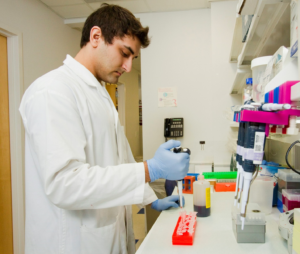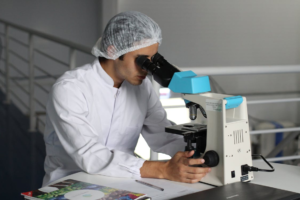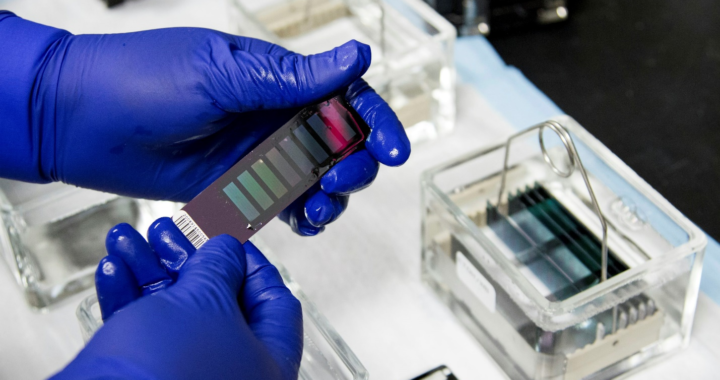In the fast-developing and growing field of forensic science, the transition from traditional to modern forensic methods marks a significant leap in our ability to solve crimes and investigate digital misconduct. Understanding the distinctions between these approaches is crucial for anyone interested in the forensic field. This guide explores the traditional vs. modern forensic methods, shedding light on how advancements in technology have transformed the landscape of forensic investigations.
Traditional Forensic Methods

Traditional forensic methods have been the backbone of criminal investigations for decades. These techniques are grounded in physical evidence analysis and rely on various forms of manual examination and scientific testing.
Fingerprint Analysis
Fingerprint analysis is one of the most well-known traditional forensic methods. It involves digital forensics engineers collecting and examining fingerprints found at a crime scene. The unique patterns of ridges and valleys in a person’s fingerprints make them an excellent form of identification. Forensic data experts use powders, chemicals, and lasers to reveal latent prints on various surfaces, which are then manually compared to suspect prints. While effective, this method requires a high degree of skill and can be time-consuming.
Bloodstain Pattern Analysis
Bloodstain pattern analysis involves studying the size, shape, and distribution of bloodstains at a crime scene. By analyzing these patterns, forensic data experts can determine the type of weapon used, the direction of impact, and even the position of the victim and assailant during the crime. This method depends on the experience of the investigator to draw accurate conclusions.
Ballistics

Ballistics is the study of firearms and ammunition to determine if a particular gun fired a bullet recovered from a crime scene. This method includes examining bullet striations (the unique marks left on a bullet by the barrel of a gun), gunpowder residue, and the trajectory of bullets. Traditional ballistics analysis often involves using comparison microscopes and manual measurements to match bullets to specific firearms.
Handwriting Analysis
Handwriting analysis, or questioned document examination, involves comparing handwritten documents to determine their authenticity or identify the author. Digital forensics engineers analyze various characteristics of handwriting, such as letter size, slant, and pressure, to identify similarities and differences between samples. While this method can be highly effective, it is also subjective and depends significantly on the expert’s experience.
Audio Forensic Services in Traditional Contexts
Though often considered a part of modern forensic science, audio forensic services have roots in traditional methods. Initially, these services involved the manual examination of analog recordings, such as tape cassettes, to enhance audio quality or verify the authenticity of recordings. Audio forensic experts would use techniques like spectrographic analysis to study sound waves and detect alterations in tapes or identify speakers based on voice characteristics.
Modern Forensic Methods

As technology has advanced, so have forensic methods. Modern forensic methods leverage digital tools and sophisticated software to enhance accuracy, speed, and reliability.
Digital Forensic Engineering
At the forefront of modern forensic methods is the field of digital forensics, which involves the recovery and investigation of material found in digital devices. Digital forensic engineers are specialists who employ advanced software and hardware tools to extract and analyze data from computers, smartphones, and other electronic devices. This can include recovering deleted files, analyzing internet activity, and decrypting encrypted data.
The role of a digital forensic engineer is critical in cases involving cybercrimes, such as hacking, fraud, and identity theft. These professionals use specialized techniques to trace digital footprints and uncover hidden or erased data, providing essential evidence that can be used in legal proceedings.
Digital Video Forensics
Digital video forensics is a modern method used to analyze video footage for use in investigations. This technique involves examining videos to determine their authenticity, enhance their quality, and extract valuable information. Advanced algorithms and software tools enable forensic experts to stabilize shaky footage, clarify low-resolution images, and identify individuals or objects within a video.
The use of digital video forensics has become increasingly important as video evidence from surveillance cameras, smartphones, and social media platforms plays a growing role in criminal investigations. By enhancing and analyzing these videos, forensic experts can provide critical insights that may be pivotal in solving cases.
Audio Forensic Services

Audio forensic services involve the examination and analysis of audio recordings to extract relevant information, determine authenticity, or enhance quality. An audio forensic expert uses specialized software to isolate specific sounds, enhance speech clarity, and identify or verify speakers. This process is essential in cases where audio recordings are a key piece of evidence, such as in covert surveillance or criminal investigations.
Modern audio forensic experts utilize digital tools to perform tasks that were once impossible or extremely difficult with traditional methods. For instance, they can remove background noise from a recording, analyze sound waveforms to detect tampering, and even match a voice to a specific individual. These capabilities make audio forensic services a powerful tool in forensic investigations.
Forensic Cell Phone Data Recovery
As mobile devices have become ubiquitous, they have also become a valuable source of evidence in many investigations. Forensic cell phone data recovery is the process of extracting data from smartphones and tablets, including deleted texts, call logs, emails, photos, and app data. This modern forensic method is essential in uncovering evidence that may not be immediately visible on the device.
Using advanced tools, forensic experts can bypass security measures like PIN codes and encryption to access the device’s stored data. This process requires a deep understanding of various operating systems and data structures. The ability to recover and analyze this data provides crucial insights into many criminal and civil cases, such as fraud, theft, and personal disputes.
Comparing Traditional vs. Modern Forensic Methods

The comparison of traditional vs. modern forensic methods reveals a clear shift towards digitalization and automation. Traditional methods, while still valuable, are often time-consuming and rely heavily on human expertise and manual effort. Modern methods, on the other hand, leverage technology to enhance precision and efficiency.
Traditional Forensic Methods
Traditional forensic methods have been the foundation of criminal investigations for many decades. These methods rely heavily on manual processes, human expertise, and physical evidence to solve crimes.
- Manual Analysis of Physical Evidence: Traditional methods such as fingerprint analysis, bloodstain pattern analysis, and handwriting examination depend on the collection and manual examination of physical evidence. These techniques require a significant amount of human interpretation and expertise, often relying on the experience and judgment of forensic data experts.
- Subjectivity and Expertise: Many traditional forensic methods, like ballistics and handwriting analysis, involve subjective analysis. Experts must visually compare bullet striations or handwriting samples, which can lead to varying conclusions based on the examiner’s skill level and experience.
- Time-Consuming Processes: Traditional forensic methods can be labor-intensive and time-consuming. The manual collection and examination of evidence, such as matching fingerprints or analyzing blood patterns, can take days or even weeks to complete.
- Limited to Physical Evidence: Traditional methods primarily focus on tangible evidence found at a crime scene. While these techniques can provide valuable information, they are often limited in scope and unable to handle the vast amounts of digital data that play a significant role in modern investigations.
Modern Forensic Methods
Modern forensic methods leverage digital technology and advanced software to enhance the accuracy, speed, and scope of forensic investigations. These methods have expanded the capabilities of forensic science, allowing for more precise and comprehensive analysis.
- Digital Evidence Analysis: Modern forensic methods focus heavily on digital evidence, using specialized software and tools to analyze data from computers, smartphones, and other electronic devices. Digital forensic engineers can recover deleted files, analyze internet activity, and decrypt encrypted data, providing a much broader range of evidence than traditional methods.
- Advanced Techniques in Audio and Video Forensics: With advancements in technology, forensic experts can now use audio forensic services and digital video forensics to analyze multimedia evidence. These methods enable experts to enhance audio and video quality, authenticate recordings, and extract vital information that may not be visible or audible to the naked eye.
- Automation and Efficiency: Modern forensic methods often involve automated processes, reducing the potential for human error and significantly speeding up the analysis. For example, digital tools can quickly compare fingerprints or match DNA samples, tasks that would take much longer if done manually.
- Wider Scope of Analysis: Modern methods are not limited to physical evidence but can analyze vast amounts of digital data, such as emails, social media activity, and GPS data. Forensic cell phone data recovery is an example of how modern techniques can extract crucial information from mobile devices, which are increasingly integral to criminal investigations.
Eclipse Forensics – Your Partners in Solving Crime
The evolution from traditional to modern forensic methods represents a significant advancement in the field of forensic science. While traditional methods still play a role, the adoption of digital technologies has vastly improved the speed, accuracy, and scope of forensic investigations.
At Eclipse Forensics, we pride ourselves on being at the forefront of this transformation. Our team of digital forensic engineers utilizes state-of-the-art tools and techniques to provide comprehensive forensic services. Whether you need audio forensic services, digital video forensics, or forensic cell phone data recovery, we have the expertise and technology to deliver accurate and reliable results. Contact us today to learn how we can assist with your forensic needs.
Experience the difference that cutting-edge technology and professional expertise can make—trust Eclipse Forensics for all your forensic investigation needs.

